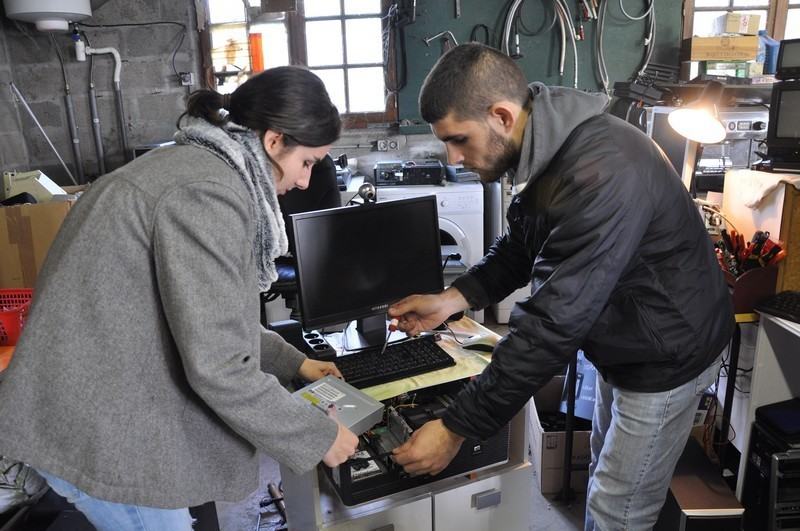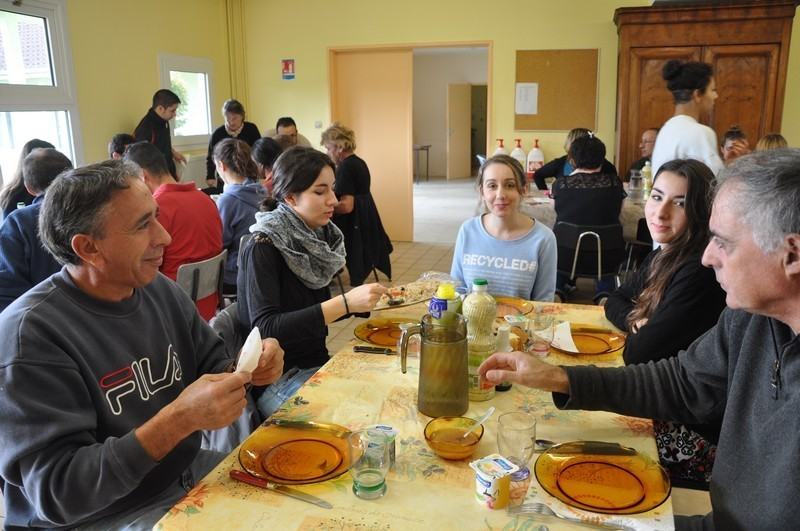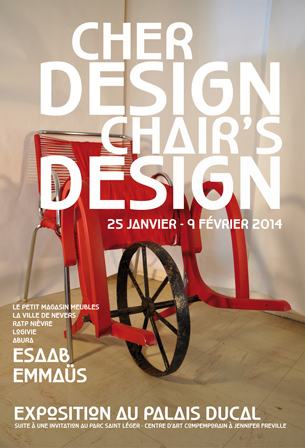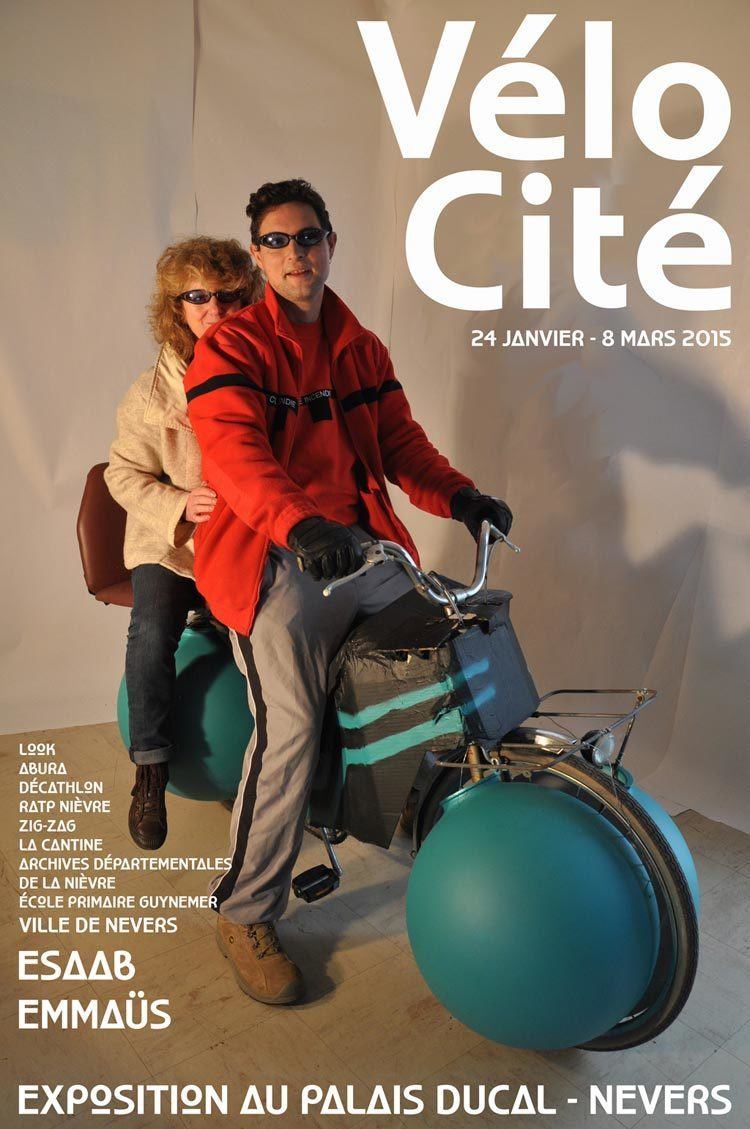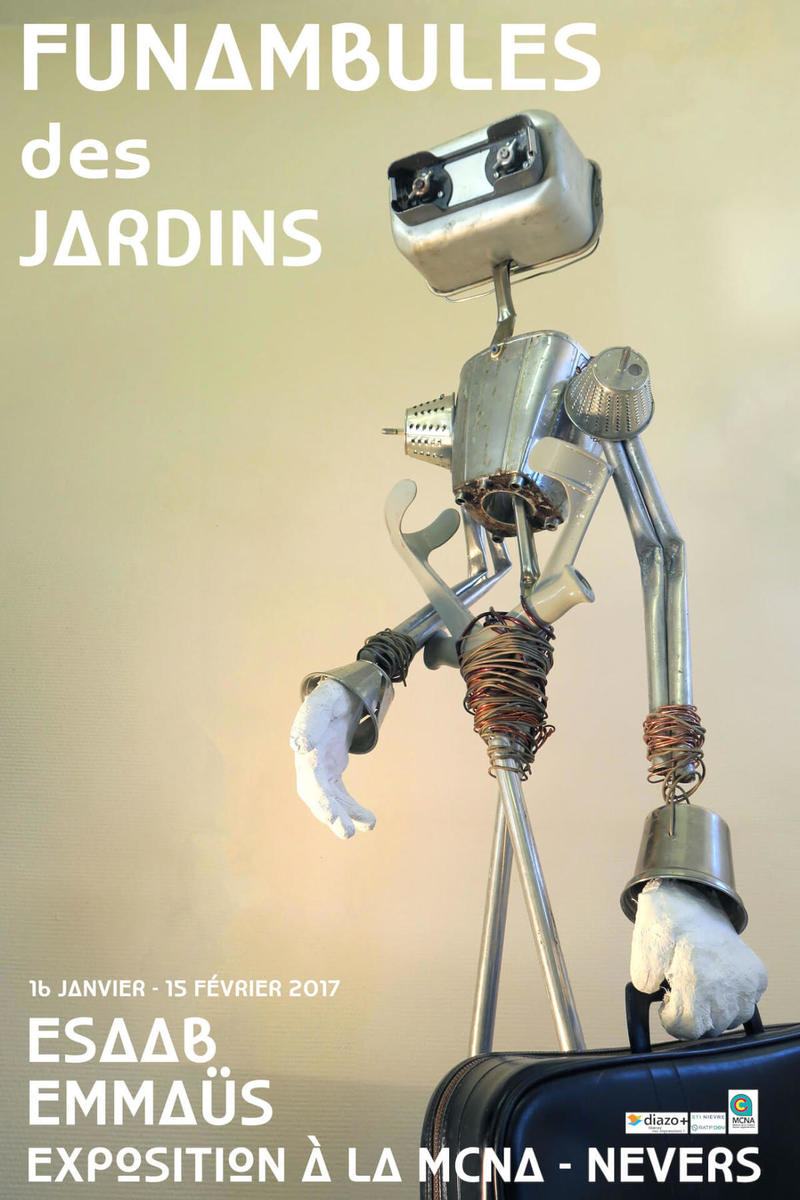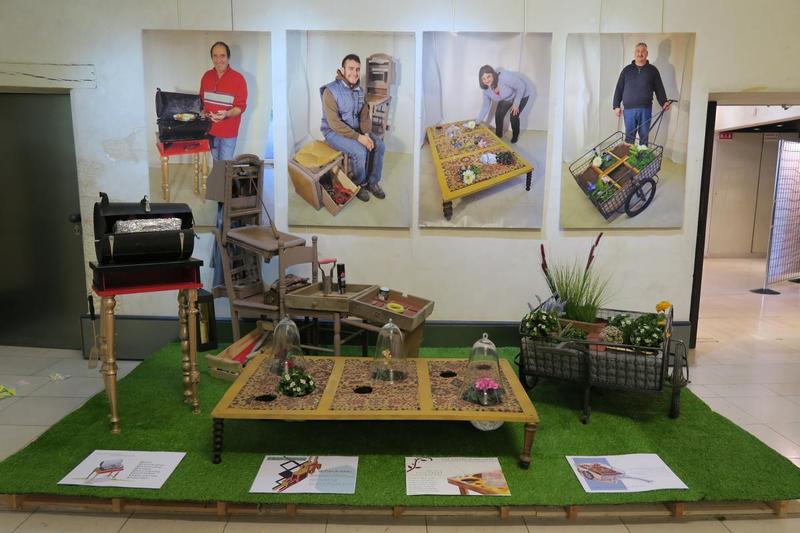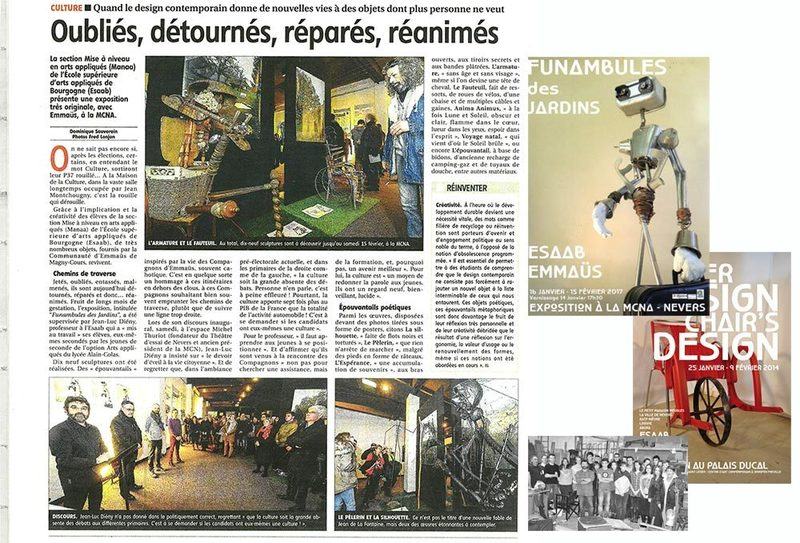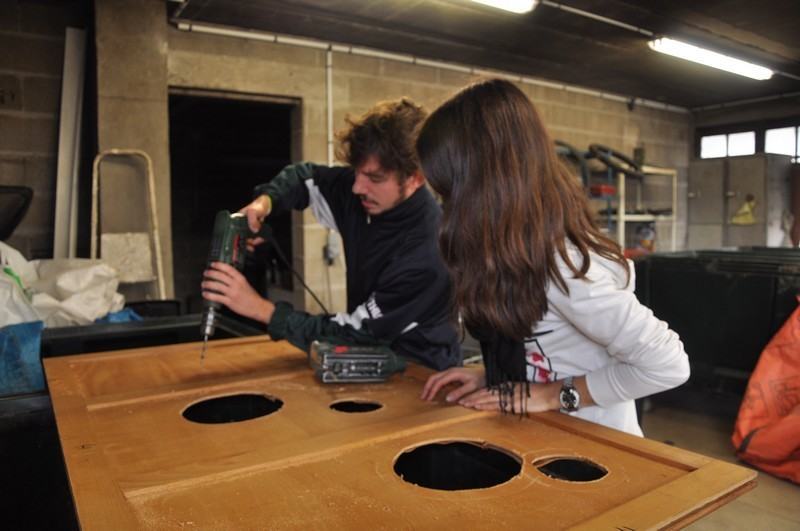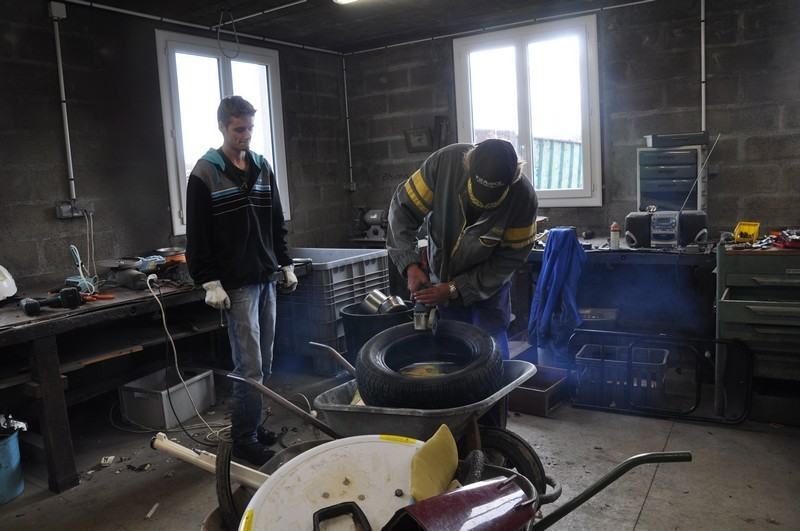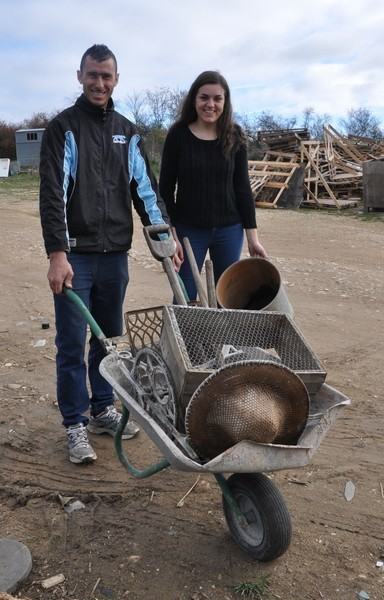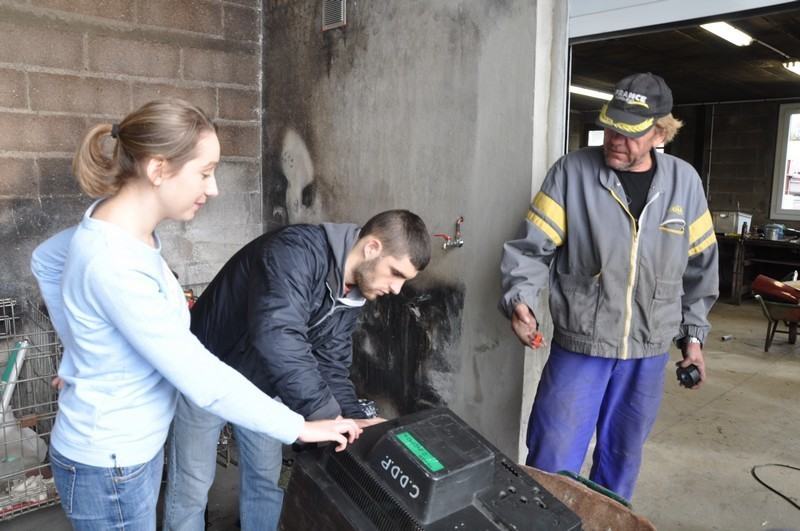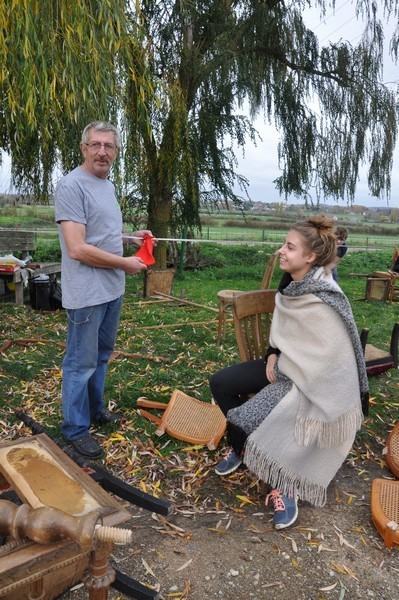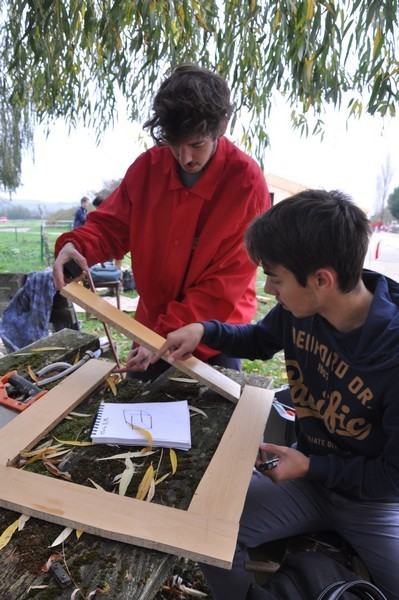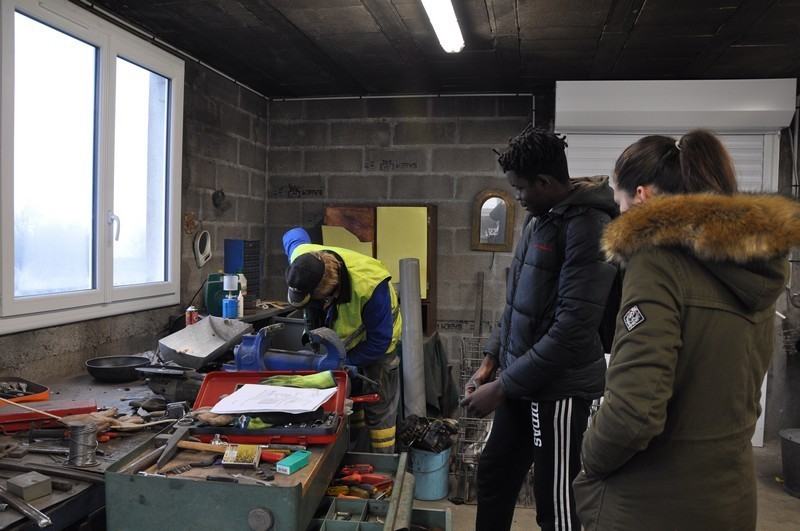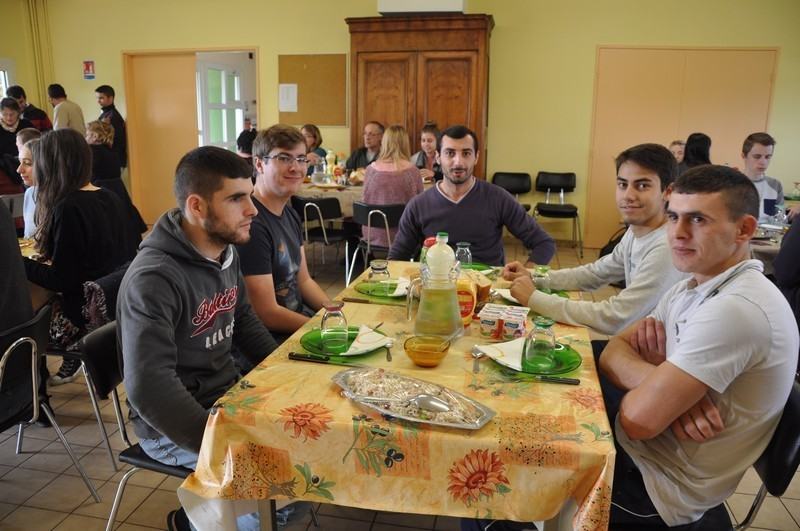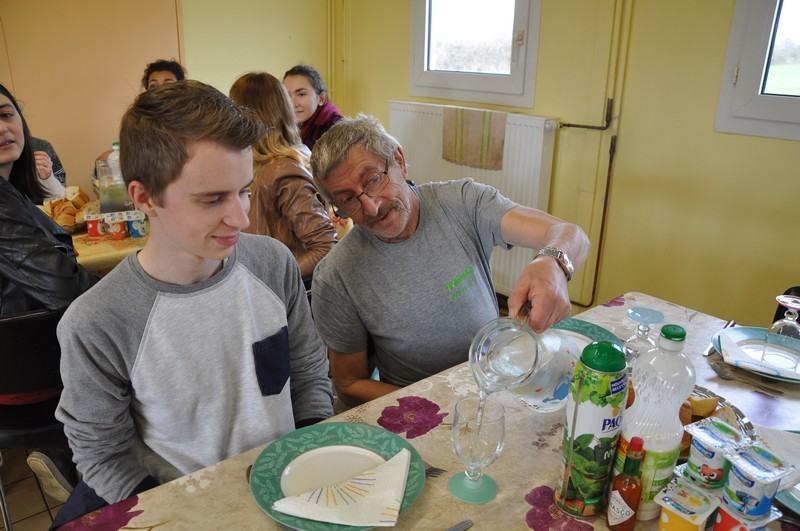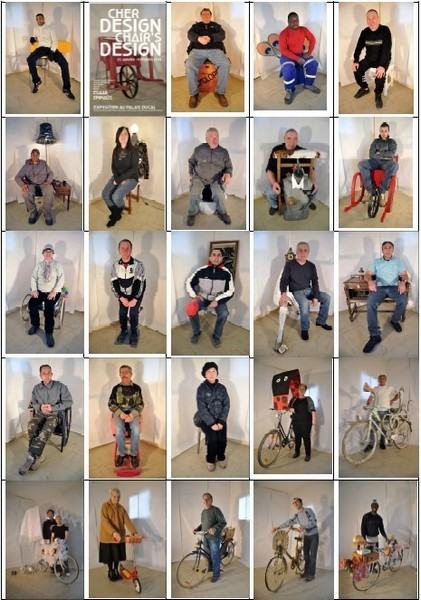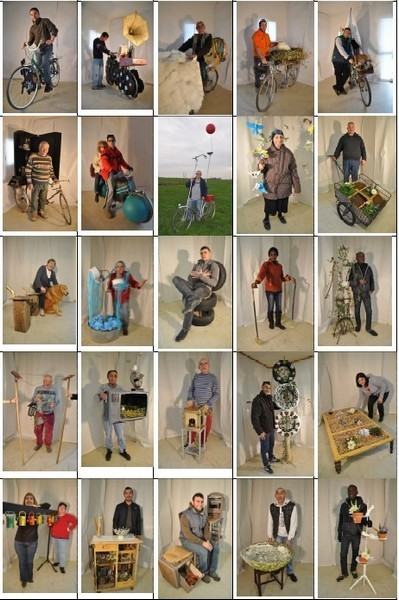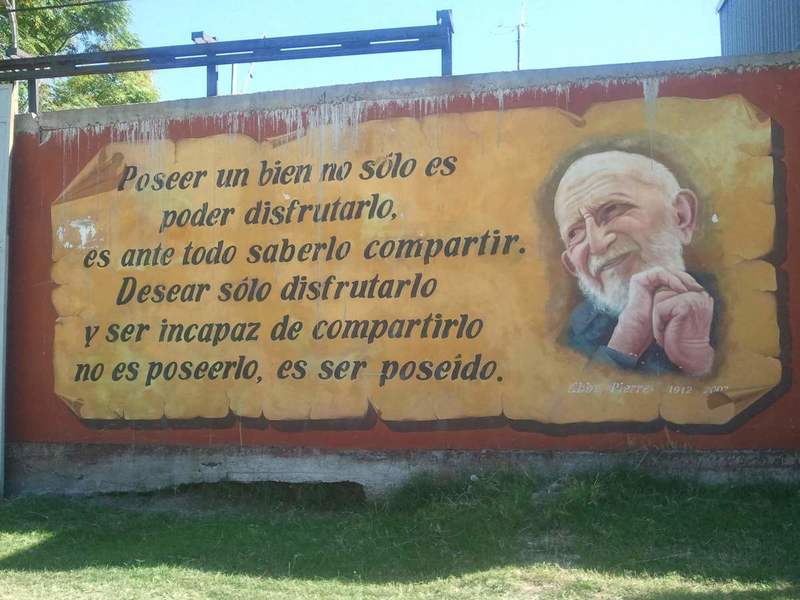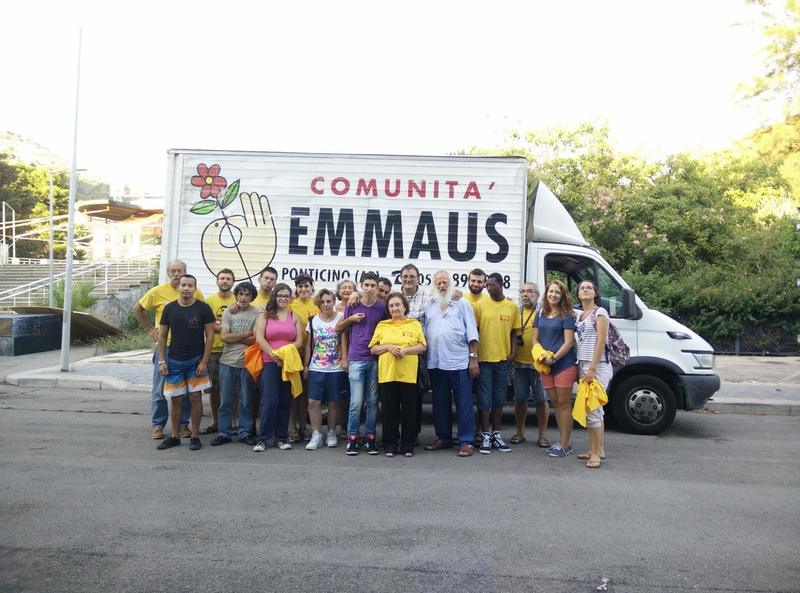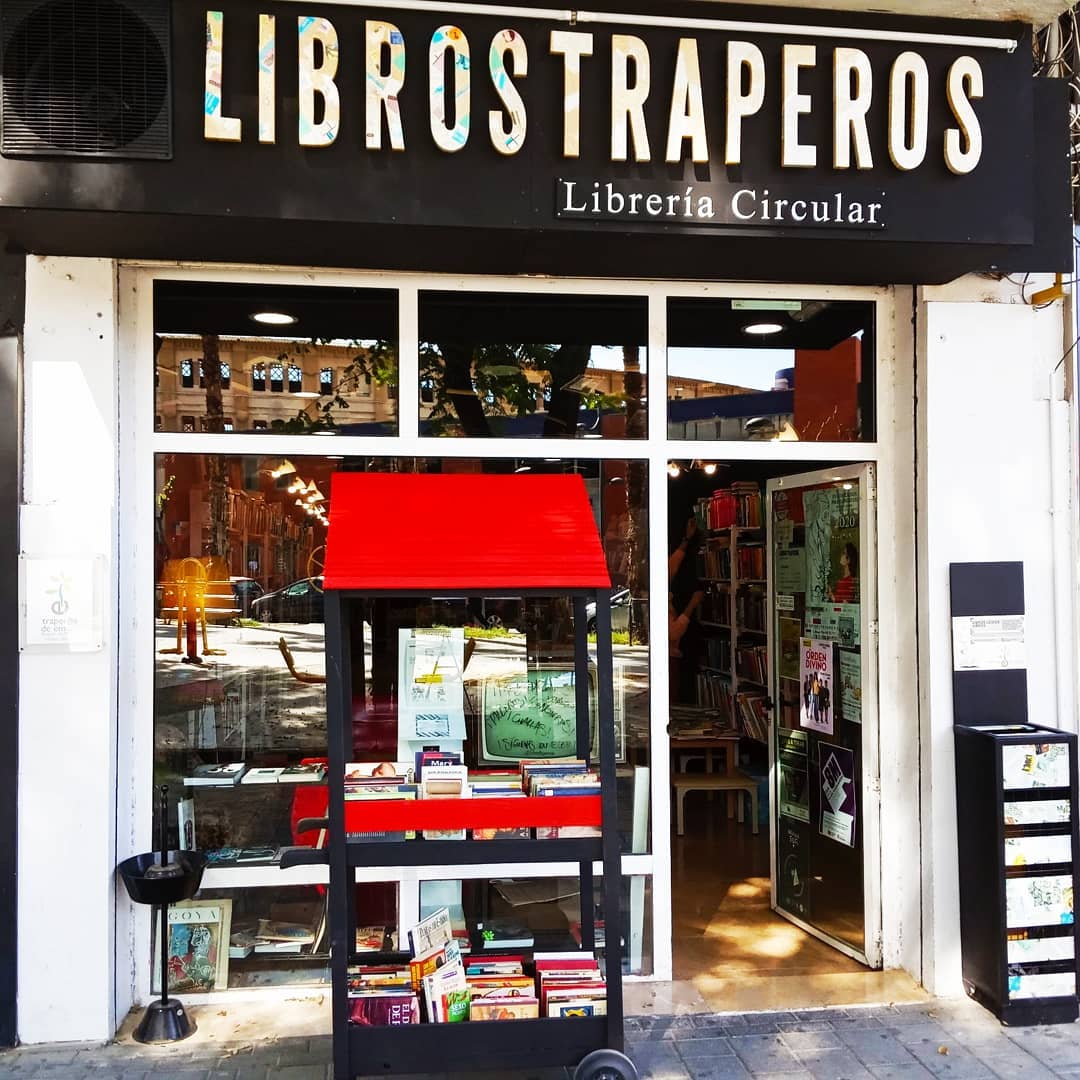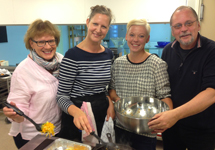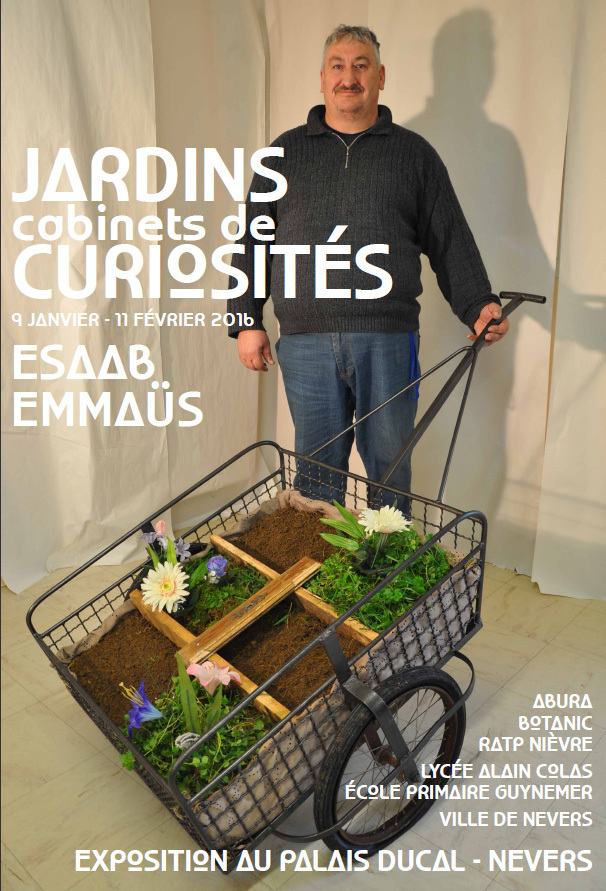
Magny-Cours – France
A second chance for objects, a second chance for people
THE CONTEXT OF YOUR INITIATIVE
Four years ago, Jean-Luc Dieny, a professor from the Nevers Burgundy École Supérieure des Arts Appliqués (graduate school of applied arts, ESAAB), proposed to the then-manager, Loïc Le Goff, that they organise a system to alter objects to produce new items with the help of the companions.
This led to several exhibitions being organised:
– “Cher design, Chair’s design” (cherished design, chair design) in 2014. The Nevers ESAAB’s 20 students from the applied arts skills upgrade classes (MANAA) worked with the Emmaus companions from Nevers Magny-Cours. The programme included a reflection process on design in recycling, a dialogue between industrial and artisanal designers, an unlikely but very fruitful meeting with the greatest ragpickers in France, some original scenography and an exhibition linking eight partners. The exhibition is still running; it was relocated to the Maison de la Culture de Nevers Agglomération (“Nevers House of Culture”, MCNA) and then the big national Emmaus Paris Salon which takes place in June at Porte de Versailles.
– “Vélo-cité” (bike city) in 2015. After the previous year’s experience with the chair project, 19 applied arts students returned to share the expertise they acquired from their experience with the Emmaus companions to build imaginative bikes. Once again, the outcome was astounding and the Magny-Cours community retains fond memories of the endeavour. Jean-Luc Dieny, professor at the Alain Colas school, was able to guide the students, and through the bike project they broadened their horizons to consider an ethical approach involving sharing.
– “Jardins – Cabinets de curiosité” (gardens – cabinets of curiosity) in 2016. Those involved in the project focused on the concept of cabinets of curiosity, rooms full of marvels filled with a range of eclectic and unusual objects akin to the bric-a-brac so dear to Emmaus communities, where people come on treasure hunts in the hope of finding a sought-after rarity.
– « Funambules des jardins » (garden tightrope walkers) beginning of 2017. For several months, 19 students worked with the Emmaus companions to create ‘metaphoric scarecrows’. As sustainable development is becoming a real need, words such as ‘recycling branch’, ‘reinvention’, ‘rehabilitation’, and ‘reparation’ all hark to the future and recall political commitment in the noble sense of the term, against the notion of programmed obsolescence.
Climate change is becoming sufficiently concerning for everyone to start thinking about their transport, consumption and life choices. It is thus essential to enable students at the beginning of their studies to understand that contemporary design does not have to involve adding a new object to the never-ending list of things that surround them.
These poetic, engaging and surprising objects are thus increasingly the fruit of the students’ very personal reflection and their unbridled creativity, which stem from their thoughts on ergonomics, the value of use or the renewal of conventional shapes, including notions addressed in their studies.
The production of these unusual objects has also revealed the infinite possibilities offered by the maelstrom of items that can be found through collection activities. This is a revelation because, as is the essence of making art out of something run-of-the-mill, one is making the ordinary sacred. Hijacking these ordinary objects shows that beauty is everywhere, including in objects which do not seem special, and that simply showcasing them can create what Kant put at the heart of the aesthetic experience: pure beauty. Like Marcel Duchamp, we believe that we can find beauty in a seemingly ordinary object if we take it away from simply its functional value. We are even disrupting the concept of a work of art.
THE ACTIVITIES CARRIED OUT AS PART OF YOUR INITIATIVE
We seek out objects which can transcend their traditional use, based on a central theme: the Emmaus companions offer objects they have recuperated and make available their DIY workshops to allow the young designers’ creative juices to flow freely; these times for mutual learning and sharing (meals, DIY sessions) with the students are what make the project so fruitful.
The students work for several months to set up the projects. In 2016, the work took place over two months, with four six-hour working sessions at Emmaus Magny-Cours to make the scarecrows and photography.
The Guynemer applied arts school has been involved in the projects every year. In 2017, the pupils from the CM1 class (middle class, first year) worked to make their own scarecrow, supported by students from STD2A (design and applied arts science and technology at the Alain Colas school). The scarecrow they made arrived at the school’s garden with his suitcases in 2016.
The exhibition showed at the Nevers House of Culture from 15 January to 16 February 2017, then the Forgeneuve Gardens (in Coulanges) before it was finally featured at the Emmaus’s national Paris Salon in June. The scenography of the exhibition (designed by Jean-Luc Diény) included large photos depicting Emmaus Magny-Cours, which were attached to billboards. Silhouettes of the companions were laid over the photos. A scarecrow was installed in front of each photo on a patch of lawn. On the ground in front of each scarecrow there was a sign designed (format and text) by the student explaining the approach for each individual creation. The 19 sculptures were stand-alone and stable. Three silk wall hangings (1m wide, 2m high) presented the project, the Emmaus community and the ESAAB.
The meetings between students and companions at the community gave them the chance to talk and get to know each other better. This collaboration bore wonderful results (in both material and human terms). If we can look at objects differently, however disfigured, is it too ambitious or presumptuous to ask the following question: can we do the same for the way we look at each human being?
WHO IS INVOLVED FROM OUR GROUP?
Approx. 10 companions, the leader, and two or three friends.
WHICH PARTNERS ARE YOU WORKING WITH ON THIS INITIATIVE?
Photos
FUTURE PROSPECTS
The action of the Emmaus movement is driven by consideration for the weakest, solidarity and secularism. Our work is guided by concrete engagement, the rejection of poverty, trust in each and every person’s ability to run their own life, the practice of bringing together those who experience injustice and those who fight it, the desire to fight against exclusion and to reject fatalism.
For four consecutive years, all the stakeholders of this project have come together for fantastic exhibitions, which reflect the great beauty of a finished work, created by an eccentric or even strange yet hugely attractive collaboration between the ESAAB students and Emmaus companions.
Restoring dignity with the companions and pride in a finished piece of work.
WOULD YOU LIKE TO ADD ANY INFORMATION ABOUT YOUR INITIATIVE?
WHAT ARE YOUR PROSPECTS?
I think that with a few more companions we could promote our furniture by sprucing it up or even transforming it and giving it a new look.
That would enable us to train the companions in restoration, which may help them get a job.
